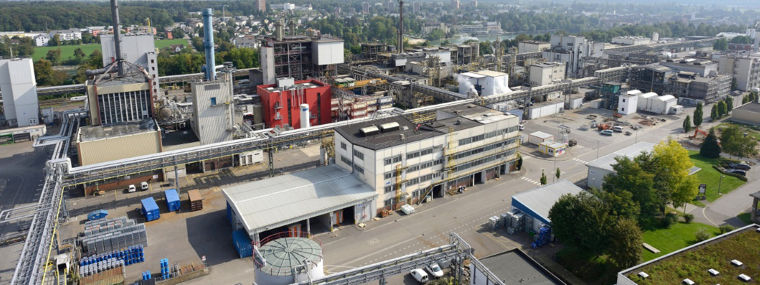ANALYSIS AND QUALITY MANAGEMENT AT EVONIK SILANES
More than product purity
Silanes are used in countless applications. For example, they protect buildings against corrosion, while their adhesion-promoting properties mean they are ideal for use in adhesive or compound materials, as well as in tire production. They also make paints and coatings more resistant to scratches, and their high purity enables them to be used in the manufacturing of fiber-optic cables and semiconductors.
“The analysis methods used in quality control are as diverse as the silanes themselves,” says Matthias Abele, Head of Quality Control at Evonik Silanes. “Our labs cover a wide range of methods, and not everyone can compete here.” The goal is to record specified critical parameters for customer applications as accurately as possible. These may vary greatly depending on the product and application: From classic titration processes, through gas chromatography, all the way up to high-resolution element analysis, which makes it possible to identify a single foreign atom among over a billion other atoms.
Enhanced quality concept
Consistent product quality and the unequivocal analytical control of this make up just one aspect of Evonik Silanes’ quality concept. Predictive and professional risk management is intended to guarantee the continuous and reliable supply for our customers.
Evonik works together with its customers to optimize and harmonize analysis methods and develop new products. However, this can only succeed when both parties collaborate closely and trust each other implicitly, the basis for which is open communication. Holistic quality management and regular independent audits ensure the high standards are maintained for products and processes alike.
Five laboratories on three continents
Evonik Silanes’ highly trained employees and its well-equipped laboratories in Germany, Belgium, the USA and China make all this possible. At the laboratory in Rheinfelden, for example, the team works in shifts, with the specialists there analyzing around 50,000 samples each year. “Ideally, incoming samples are analyzed on the same day,” says Abele.
“We have many special measurement techniques that can be split into four categories,” the chemist explains. Depending on the question or the sample type, the laboratory experts select a method or a combination of different methods.
They primarily perform trace element analyses for products that are used in semiconductor technology or for fiber-optic cables. This method enables trace elements of foreign metals in the silanes to be analyzed – “homeopathic measurements,” as Abele calls them.
Physical properties such as density, viscosity and color index are determined in line with the currently applicable norms and standards, thereby providing customers with a reliable framework.
Our expert analysts use different spectroscopy methods to reliably detect unwanted product contamination. One special method used since 2019 is X-ray fluorescence spectroscopy, with which it is possible to determine the entire silicon content in organosilanes. This method is not only quicker, but also more reliable and accurate than other processes which require the use of hydrofluoric acid, for example.
Chromatography is used to both identify and quantify contamination in volatile materials. “The question here is usually: What is the percentage of something in a material, for example how high is the purity?” explains Abele. Other molecular properties, such as size or color, are also recorded and categorized.
Digitalization advances ongoing development of methods
“We rely on digitalization to develop our analysis methods further,” the expert says. The aim is to increase the number of analyses performed online. “This saves time and opens up many possibilities for non-destructive testing,” says Abele.
At Rheinfelden, silane analysis is primarily used in three areas: end product inspection prior to product approval; in-process inspection in order to continuously monitor production processes; and finally, to support related research and application technologies when developing new products. The site on the Swiss border is also a global reference laboratory for silanes, where new methods are developed and then rolled out at other laboratories. This often takes place within the framework of projects with customers or external partners.
Round robin tests confirm laboratory performance
The laboratory at Rheinfelden regularly performs round robin tests to check and verify the quality of the analyses and to ensure that the results from the silane laboratories are valid and useful at all times – regardless of where they were procured. To this end, the test methods themselves are examined, as well as the procedures, working methods and equipment in the laboratory. This enables Evonik to guarantee that the analytical methods in the laboratories comply with the high standards required to ensure customers can rely on the best possible quality.
